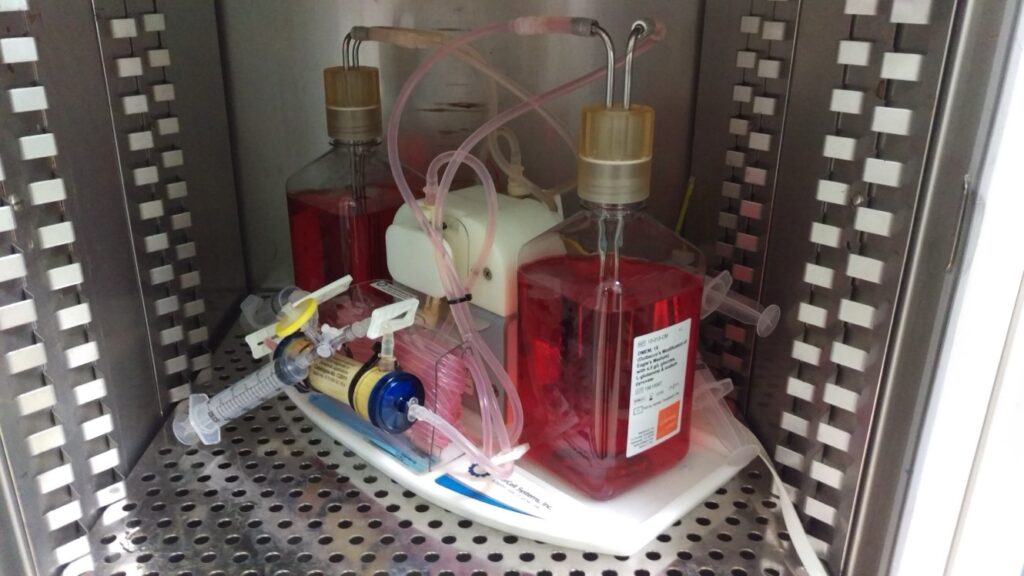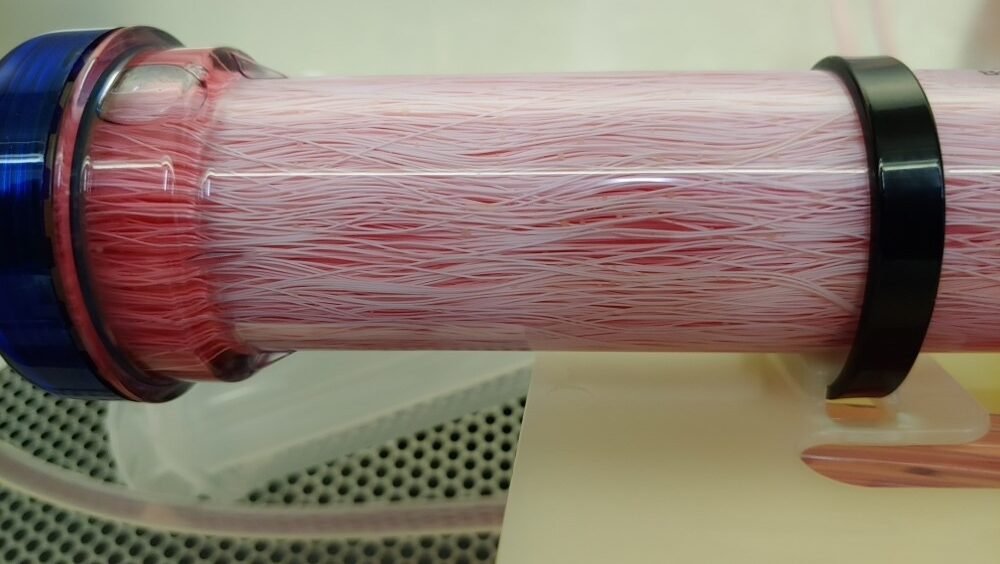FiberCell's 3D Hollow Fiber Perfusion Bioreactors
FiberCell Systems | A better way to grow cells
A histocentric bioreactor, such as a hollow fiber bioreactor, operates as a closed system, protecting cultures from contamination and operators from biohazards, even without antibiotics.
The concept of the hollow fiber bioreactor was introduced to promote a more “cell-centric” perspective in cell culture systems. Traditional 2D and low-density suspension culture methods are not ideal because they often lead to high variability and inconsistent protein folding. These methods can also result in significant contamination from host cell proteins and DNA. The hollow fiber bioreactor aims to replicate the in vivo environment in in vitro systems, focusing on the needs of the cells. Five histocentric principles have been proposed to improve the reproducibility and efficacy of biological therapies:
Current cell culture practices are best described as “people-centric”. Laboratory facilities are generally designed for the comfort and efficiency of the workers, prioritizing convenience over the optimal conditions required by the cells. Benches, chairs, hoods, and pipettors and even the CO2 incubator are designed for human comfort and efficiency. Each time the incubator door is opened and cultures are removed from the incubators for cell handling or for use in machines, they are vulnerable to contamination and fluctuating conditions.
A hollow fiberbioreactor, operates as a closed system, protecting cultures from contamination and operators from biohazards, even without antibiotics. Providing more conditions and physiological stimulation for cells in culture improves biomedical reproducibility.

The FiberCell hollow fiber bioreactor is a completely closed system that applies these histocentric principles, protecting the cells from microbial contamination. The system uses large media reservoirs and active recirculation in a hollow fiber to ensure continuous consistency of nutrients and wastes, which is an integral part of the homeostatic physiological support that cells require. Reduced handling time keeps cells in optimal incubator conditions with fewer interruptions. Individual cell types have different requirements depending on location, function and physiology. The cell-specific microenvironment must come from the cells themselves, along with active and passive control from the endothelial barrier.

By adopting histocentric principles, researchers can achieve more reproducible and physiological results, paving the way for advances in regenerative medicine and cell therapy. A 3D perfusion artificial capillary hollow fiber bioreactor adheres to the principles of a histocentric bioreactor. They support high cell density, active perfusion of nutrients and gas, and long-term continuous culture in an in vivo-like manner. They go beyond “histocentric”, a cell-centric approach, to the next level of organization, “histocentric”, a tissue-centric approach.
To learn more about the hollow fiber bioreactors, you can download the document below. This document provides an overview of the histocentric principles and benefits of hollow fiber bioreactors. We explain how these advanced systems overcome the limitations of traditional cell culture methods by creating a more cell-friendly environment. By understanding and applying these histocentric principles, researchers can achieve more consistent and physiologically relevant results, paving the way for advances in regenerative medicine and cell therapy.
We gladly support you by keeping you updated on our latest products and the developments around our services.